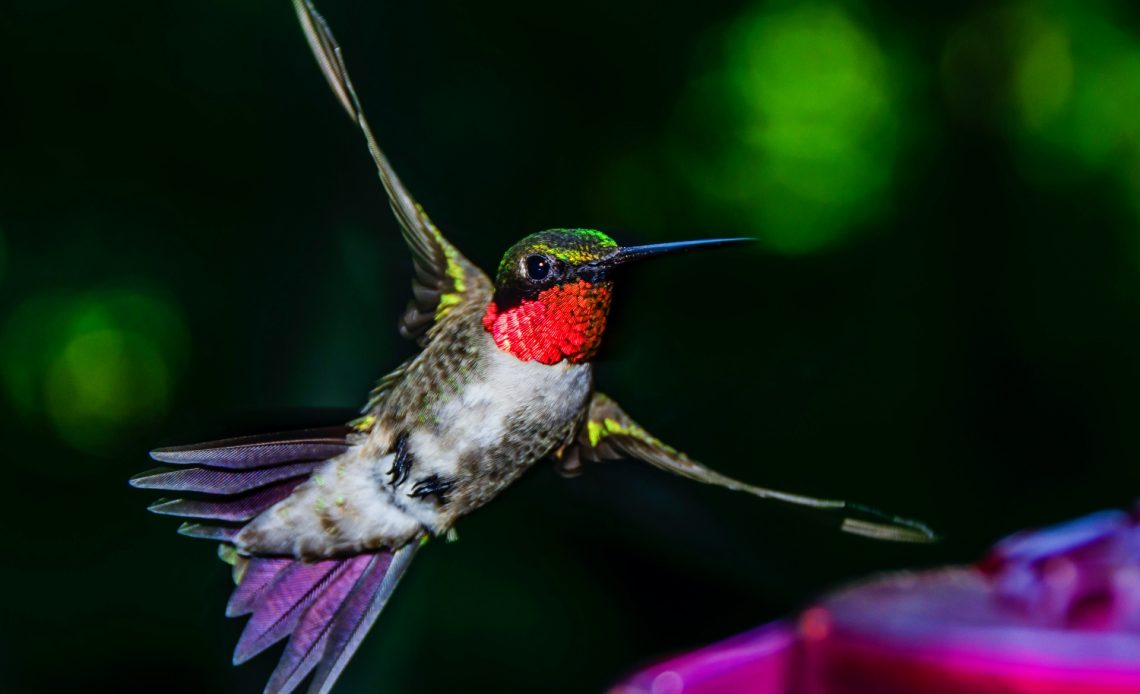

We’re here to help! Wild Yards is a completely free website that is 100% dedicated to helping you create a wildlife-friendly, sustainable yard. Read more
WildYards is reader-supported. When you buy a product through a link on our site, we may earn a comission. Every product is independently selected by our (obsessive) editors and our reviews are unbiased and objective. Read more about our mission or our privacy policy.
You don’t have to be an avid birdwatcher to enjoy watching hummingbirds. These vibrantly colored avians can be highly entertaining, diving from the flowers in your garden to the feeders on your porch. Their impressive speed and daring natures make them quite the spectacle, but their seemingly erratic behavior can be puzzling to the average bystander. If you’ve observed the hummingbirds in your backyard for any length of time you know that these little guys can get pretty aggressive toward their peers at the drop of a hat. But just why do hummingbirds chase each other around all the time?
Hummingbirds can be surprisingly aggressive despite their small size — or, rather, because of it. Hummingbirds are so small, they can’t afford to lose valuable nectar to competition, so their aggressive behavior is largely due to resource guarding. However, hummingbirds will also chase each other in order to protect their nests and defend their mates.
5 Reasons why hummingbirds chase each other
Hummingbirds are aggressive by nature, so it’s not unusual to see them chasing each other all over the place. They may be sitting at your feeder one minute enjoying a sip of nectar, and the next, they may be duking it out all across your backyard for seemingly no reason at all. Of course, there’s always a reason. Through careful observation, you can determine why your hummingbirds are chasing each other. It’s usually due to one of the following five reasons.
Defending their food sources
If you have a homemade nectar feeder set up in your yard, then you probably see hummingbirds chasing each other on a daily basis. Sometimes it may even seem like the busy little birds spend more of their time fighting than eating! When hummingbirds find a reliable source of nectar, whether it’s your begonias or your hummingbird feeder, they guard it like their life depends on it. And it does.
Although hummingbirds vary in size depending on species, most hummingbirds in the United States average anywhere from 3 to 4 ½ inches in length. That’s pretty small. And when you consider the fact that their wings flap at a rate of 80 beats per second, and their hearts beat at 1,260 times a minute, you can imagine how much that impacts their nutritional needs.
Hummingbirds have the highest metabolic rate relative to their size of any species in the world. They can only go three to five hours without eating. If they don’t find enough food during the day, they’ll feed at night, even though they’re not nocturnal. Hummingbirds need to eat up to half of their body weight in nectar every day. Since they never know when they’ll be able to find their next meal, they’ll defend their food sources at all costs.
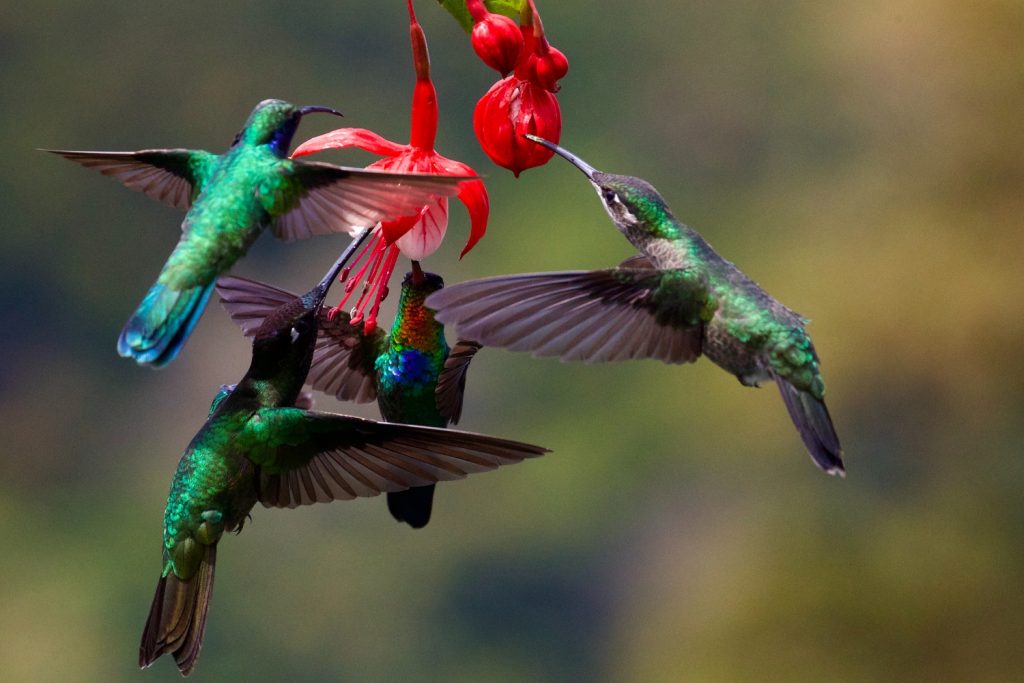
Guarding their territories
Hummingbirds establish their territories based on resource availability. If a hummingbird finds an area with plenty of food, water, and nesting materials, it may become overly protective of it. This is another form of resource guarding, and even though it may seem cruel to us, it’s a hummingbird’s strategy for survival.
It’s a close call, but male hummingbirds are more territorial than females — at least, in general. Males typically choose up to a quarter of an acre of land to claim as their own. Once they’ve determined which areas belong to them, they’ll chase away other males to entice females to visit the territory.
Protecting their nests
Female hummingbirds benefit from the males’ defensive behaviors. They’re more likely to choose nesting sites in well-guarded territories because they’re a much safer place to rear young. However, female hummingbirds will chase each other to protect their nests and their babies, too. They can become incredibly territorial during the nesting season.
Hummingbirds like to nest in trees and shrubs, or thickets made of vines. Dense foliage offers camouflage and natural protection from the elements. But if the plant a female hummingbird has decided to nest in produces nectar-rich flowers, they can spend a lot of their time chasing off other hummingbirds once their babies have hatched.
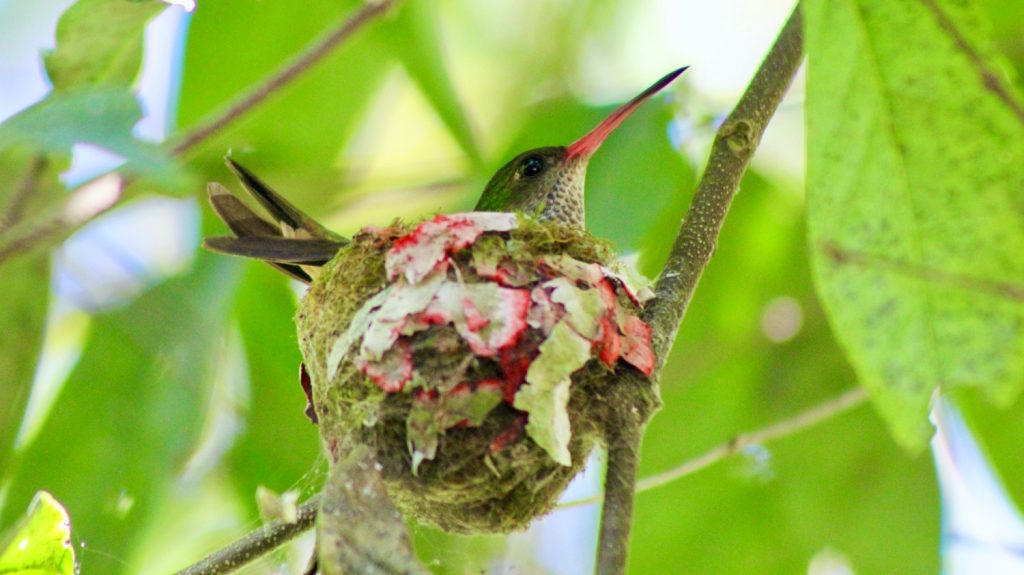
Males displaying possessive behavior over females
Once a male hummingbird has sectioned off his territory, he inevitably becomes possessive of the visiting females when other males pass through. So what looks like one hummingbird chasing another away from your feeders could actually be a male chasing off a competitor to prevent him from stealing one of his prospective mates.
When you see hummingbirds engaging in close-contact fighting, it’s almost always males, and it’s almost always territorial in nature. Hummingbirds typically mate in late winter and throughout the spring. So if you see hummingbirds fighting during those times, there’s a much higher chance that it’s a result of possessiveness over females in the territory than over something else, like food and other resources.
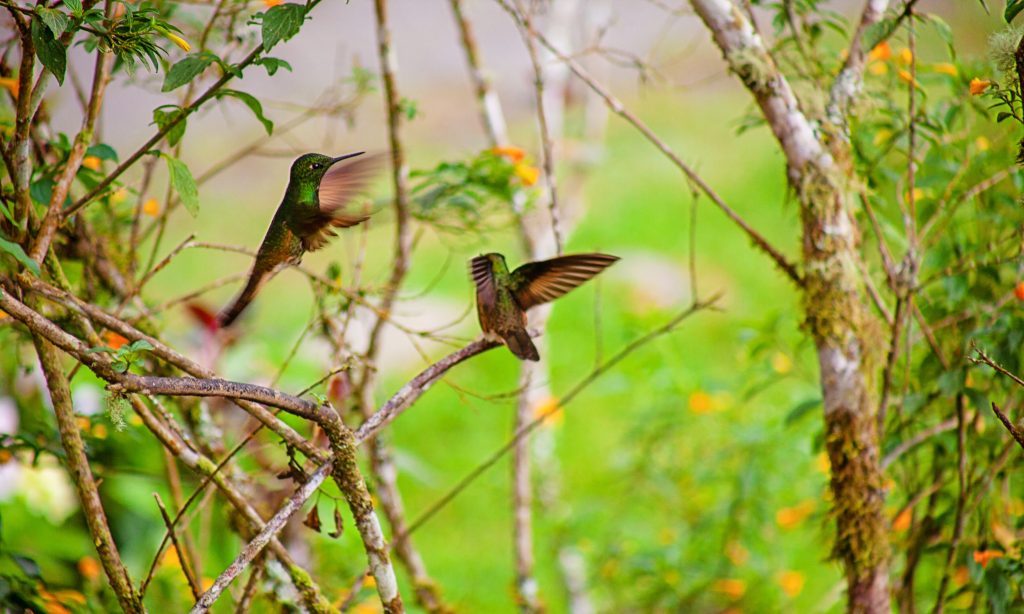
Changes in the pecking order
Social animals across species often challenge each other in group settings, each individual vying for a better position in the hierarchy. In hummingbird communities, larger birds dominate smaller ones. If you see hummingbirds chasing each other across your yard, there could be a rift in the pecking order.
It’s no surprise that the big hummingbirds dominate the little ones. But it’s not uncommon for juvenile hummingbirds to challenge the mature birds at the top of the pecking order. It isn’t the case that one hummingbird rules a territory unquestioned. The top hummingbird is forever being challenged, which results in frequent high-speed chases.
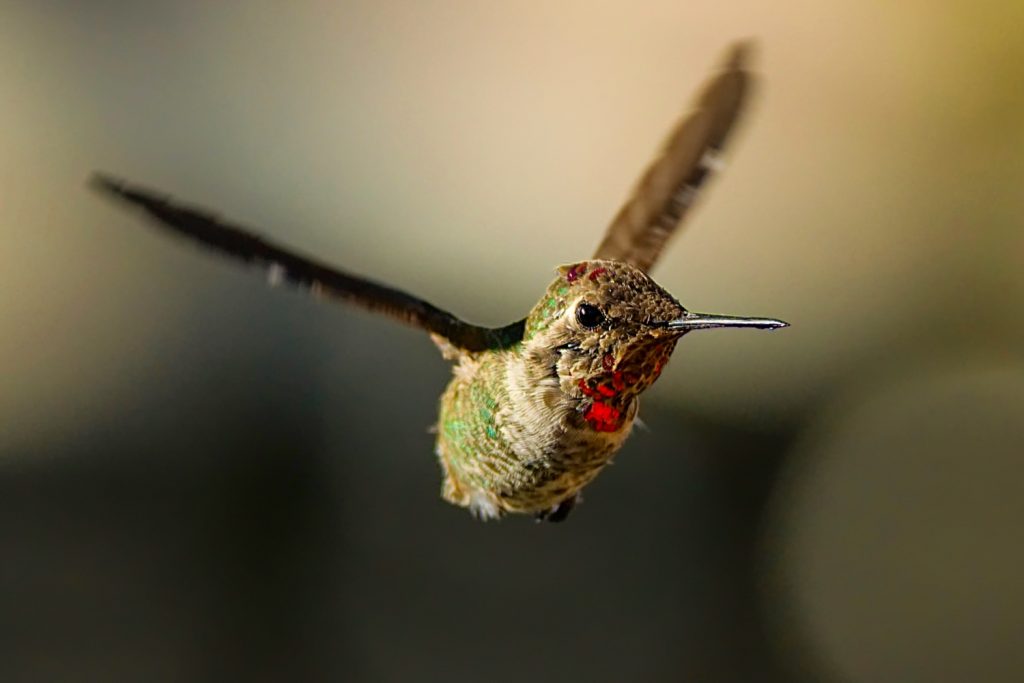
Play-fighting/courtship
Sometimes male hummingbirds engage in play fights with females in a courtship display. The male will puff up his feathers to show off his colors, and perform a variety of flying maneuvers to impress his potential mate.
In a dive display, males fly to heights of 60 to 130 feet into the air, then take a nosedive to the ground, pulling up at the last possible second. As the male flies off, he uses a distinctive honking sound, before repeating the move three or four more times. Males rely on their flying skills to impress their mates.
Another courtship gesture is the shuttle display. As the female sits on a perch, the male flies back and forth in a “U” shape to get her attention. This constant movement is can be dizzying to watch and is accompanied by the male’s incessant vocalizations. If the female accepts the male, she will allow him to chase her around before mating.
Although neither of these romantic gestures is aggressive, they could be misconstrued as fighting or chasing by the untrained eye.
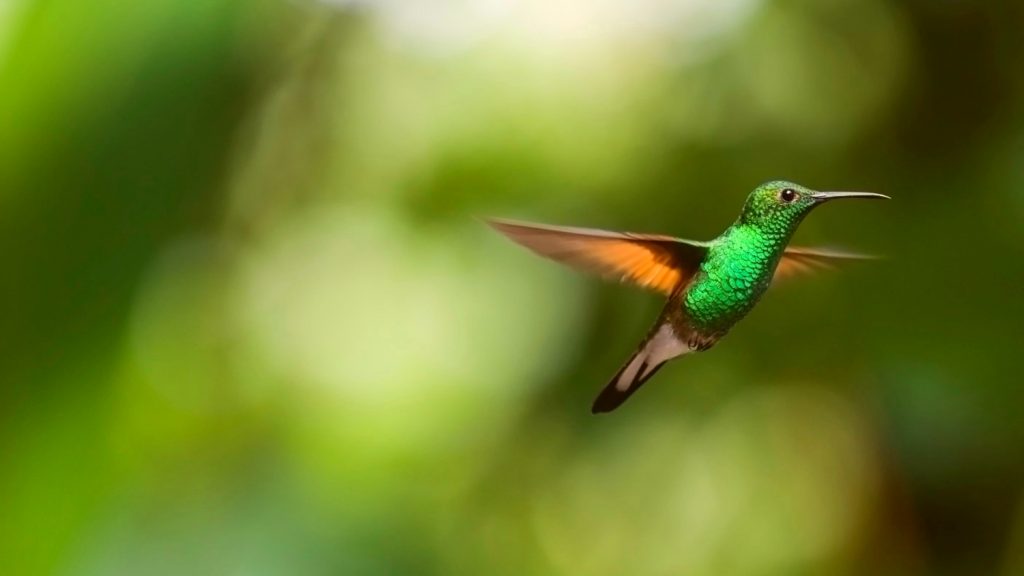
What are the signs that a hummingbird is acting aggressively?
Sometimes hummingbirds chase each other because they’re resource-guarding. Other times, it’s because they’re being affectionate. But how can you tell when a hummingbird is being territorial and when it’s just trying to be romantic? Here are a few clues that will let you know that a hummingbird is acting aggressively.
Sharp vocalizations
Hummingbirds have weak vocal cords compared to other birds, so they don’t really sing. They do, however, utilize a variety of vocalizations to communicate. Loud, sharp-sounding chirps and buzzes are a sign that a hummingbird is becoming agitated. Males, in particular, will use these harsh vocalizations as they chase down their competitors. If two hummingbirds swoop past you crying shrilly as they go, that’s a good sign that they’re fighting.
Puffed up plumage
Males puff up their feathers to attract females. But they’ll ruffle their plumage to appear bigger in an attempt to ward off would-be competitors, too. Although hummingbirds are more than willing to chase each other around, they would much rather scare competitors off without having to leave their perch. The bigger a male hummingbird can make itself look, the less likely others are to try to fight him. If you see a male hummingbird puffing up his feathers and spreading his wings out at the perch on your feeder, keep an eye on him. He’s getting ready for a fight!
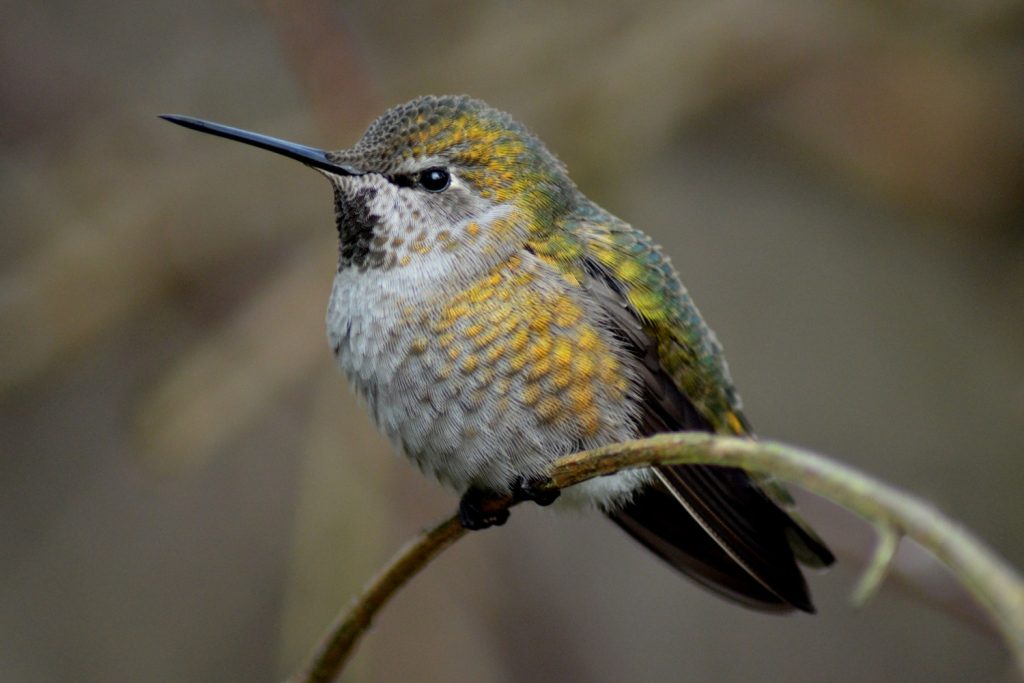
Diving and chasing
When hummingbirds are chasing each other because they’re fighting, rather than courting, the birds will be much more confrontational. First, the hummingbirds will face up and point their beaks at each other threateningly. Sometimes, this is enough to scare the submissive bird off.
If the confrontation escalates, the birds will take flight from their respective perches and begin chasing each other. The birds will take turns swooping down after each other, diving through the air, and chirping sharply as they go. Males are more likely to engage in this type of behavior than females. They use repeated dives to intimidate competitors with their impressive flying skills.
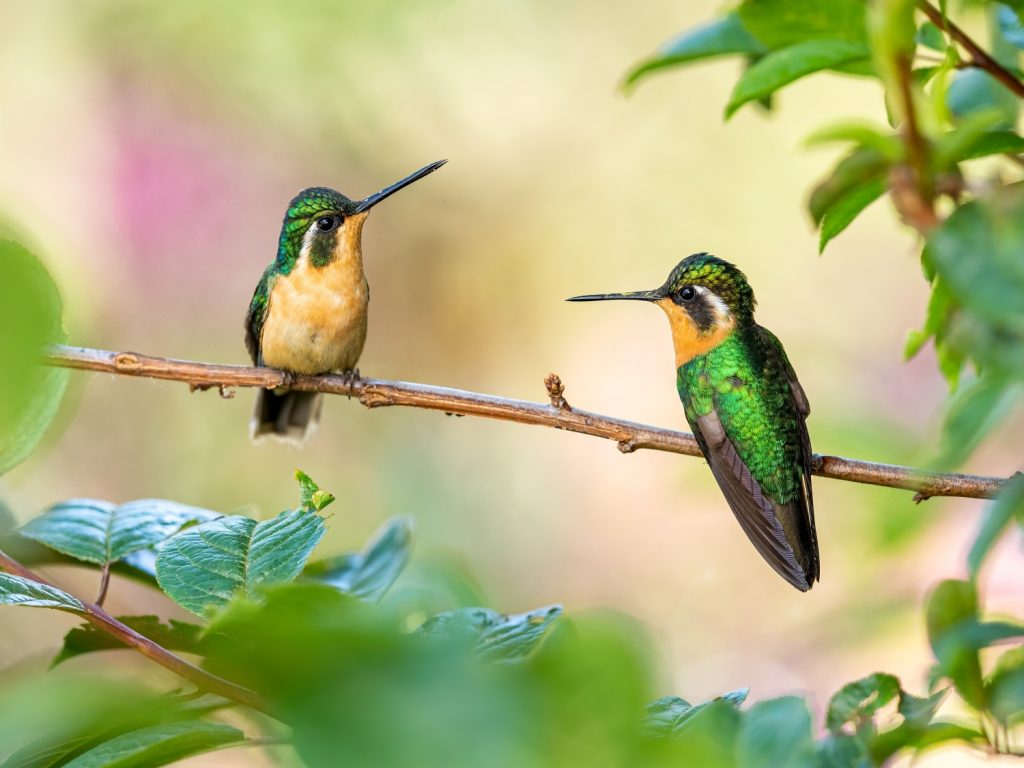
Close combat
When hummingbirds engage in a particularly heated “debate”, they’ll use their beaks and claws in close combat to attack their enemy. If it looks like your neighborhood hummingbirds are sword-fighting around your feeder, they’re not just fooling around, they mean business.
Although hummingbirds chase each other regularly, it’s not often that they get close enough to each other to do lasting damage. Still, these close combat situations do happen, especially when you have two aggressive males vying for the same territory.
Are hummingbirds aggressive to other animal species?
Hummingbirds will chase after anything they perceive as a threat. It could be a butterfly, bee, or wasp, or it could be another type of bird. Particularly brave hummingbirds will attack cats and squirrels if they think they’re getting too close to their food or nests. Sometimes, hummingbirds will even get up close and personal with humans. The good news is that hummingbirds aren’t typically aggressive toward people. In many cases, hummingbirds learn to associate their feeders with humans, and they’ll follow people around their backyards hounding them for food. Wearing a red shirt or hat can also encourage hummingbirds to chase after you, but that doesn’t mean they’re being aggressive. They’re just attracted to the color.
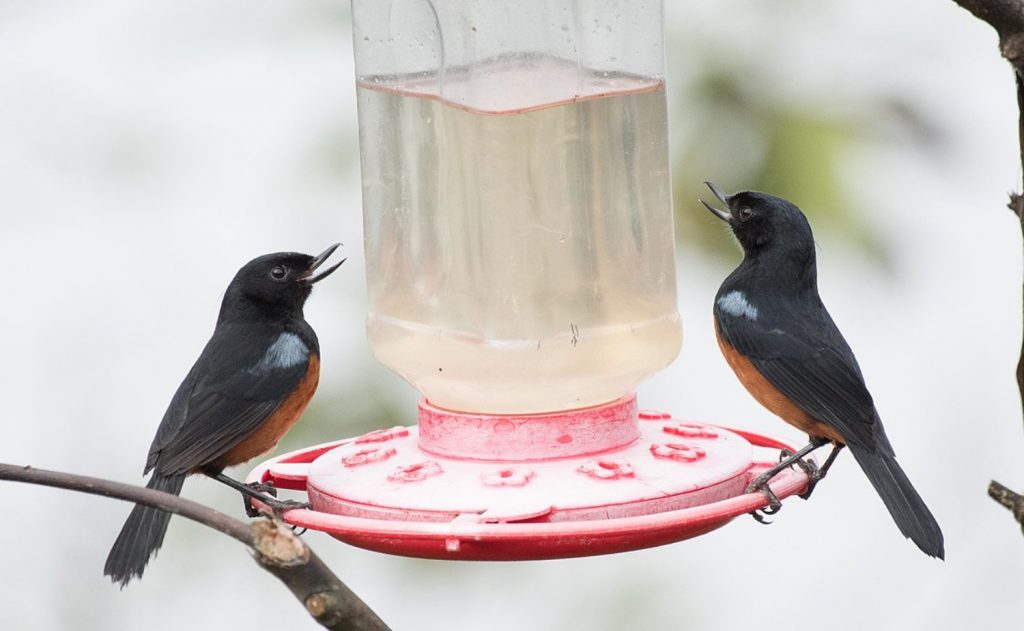
Do hummingbirds fight to the death?
Hummingbirds can get into serious arguments with each other. And many of them will even duke it out with species several times bigger than they are. But, aggressive as hummingbirds may seem, they typically won’t fight to the death. Hummingbirds want to defend their territories and their mates, and they’re willing to chase competitors for extended periods to drive them away. But they’re not out for blood. If you see hummingbirds chasing each other, you can rest easy knowing that they probably won’t hurt each other in the process.
That said, hummingbirds aren’t afraid to injure competitors if they have to. And due to their small size, even a minor injury can result in death — either because the wound becomes infected, or because the hummingbird is unable to feed as a result of its injuries and starves to death. However, it’s worth noting that these instances are few and far between. They’re certainly not the norm.
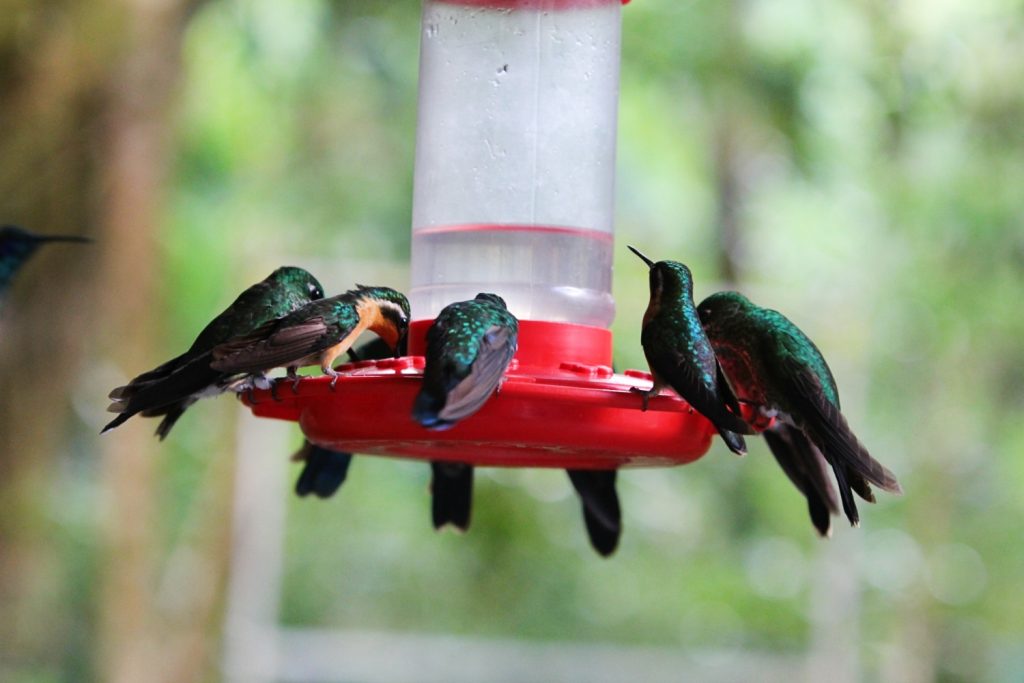
Are some hummingbirds more aggressive than others?
Any hummingbird from any species can be territorial, but some species are more aggressive than others. Rufous hummingbirds and ruby-throated hummingbirds are both extremely confrontational. When it comes to territorial in-fighting, males of these species dial things up to eleven. These hummingbirds are more aggressive around feeders and are more persistent at chasing off the competition when it comes to securing a mate.
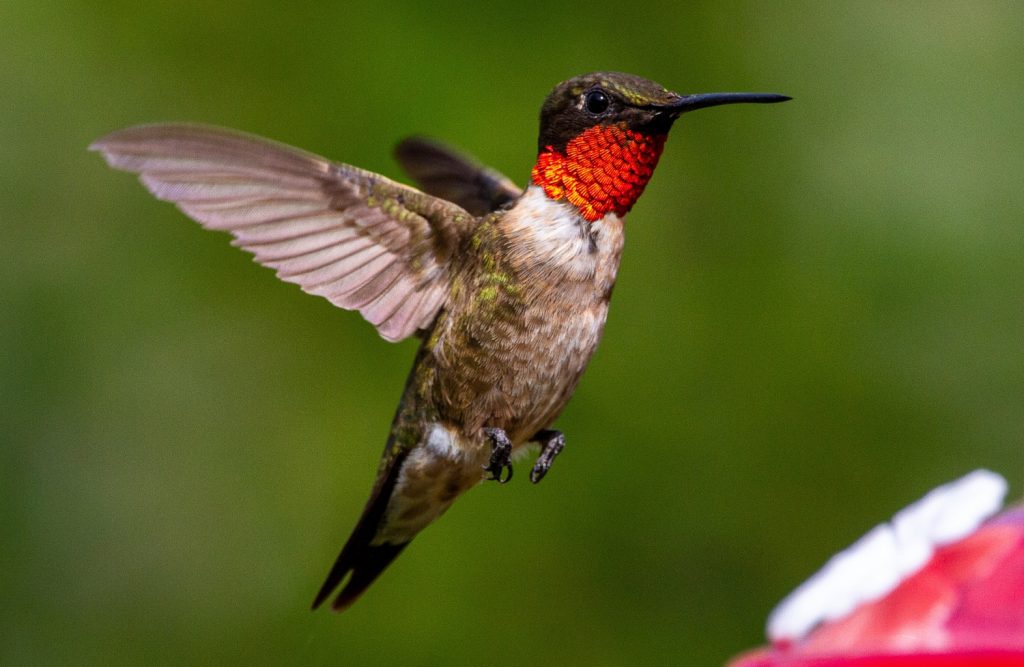
Are hummingbirds more aggressive at certain times of the year?
Hummingbirds tend to be more aggressive in spring during the mating season. The males’ territorial behavior increases their caloric demands, and the females require more nutrients to lay their eggs. These excessively confrontational behaviors typically taper off over the summer.
By fall, most hummingbirds are preparing for their winter migration, which means an increase in aggressive behavior. Flying thousands of miles is a heck of a journey for the tiny hummingbird, and with their already high metabolisms, they need all the food they can get. Hummingbirds chase each other more often in the fall to hoard valuable resources for themselves.
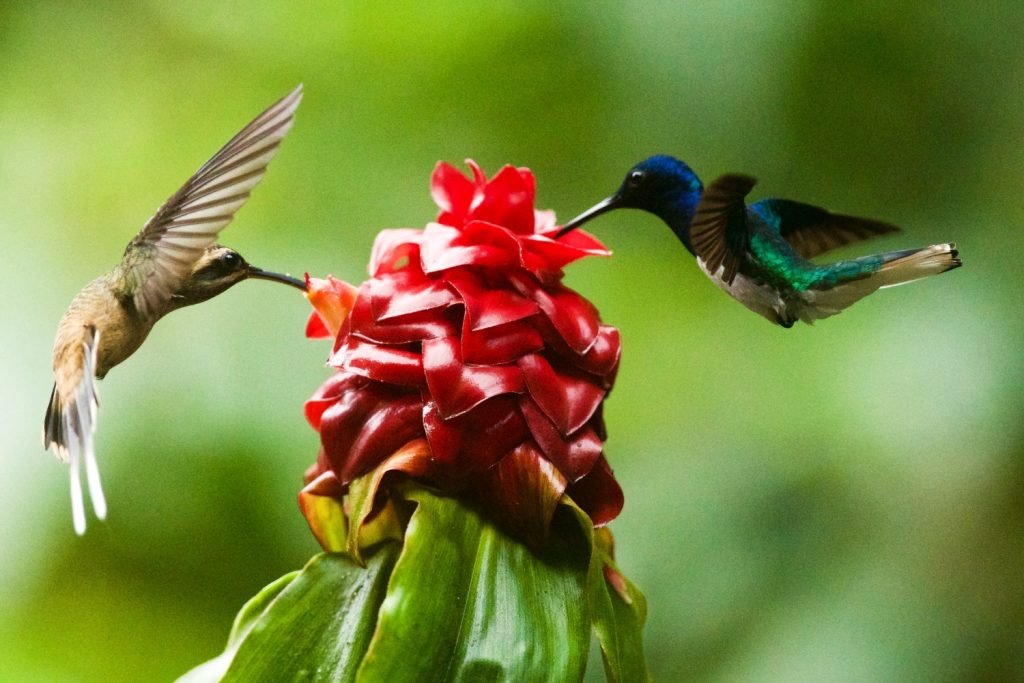
Do male hummingbirds ever fight with female hummingbirds?
Unlike owls, hummingbirds are not monogamous. Once a pair mates, the female leaves the male and takes off to build a nest, so the male is free to mate again. Males won’t hesitate to fight with each other. But since every female is a prospective mate, males seldom engage in combat with them.
Female hummingbirds, on the other hand, will chase males if they feel they’re a threat to their nests. To be sure, when it comes to aggression, female hummingbirds can give males a run for their money. Nesting mother hummingbirds are known to be particularly courageous, taking on predators many times their size to protect their eggs.
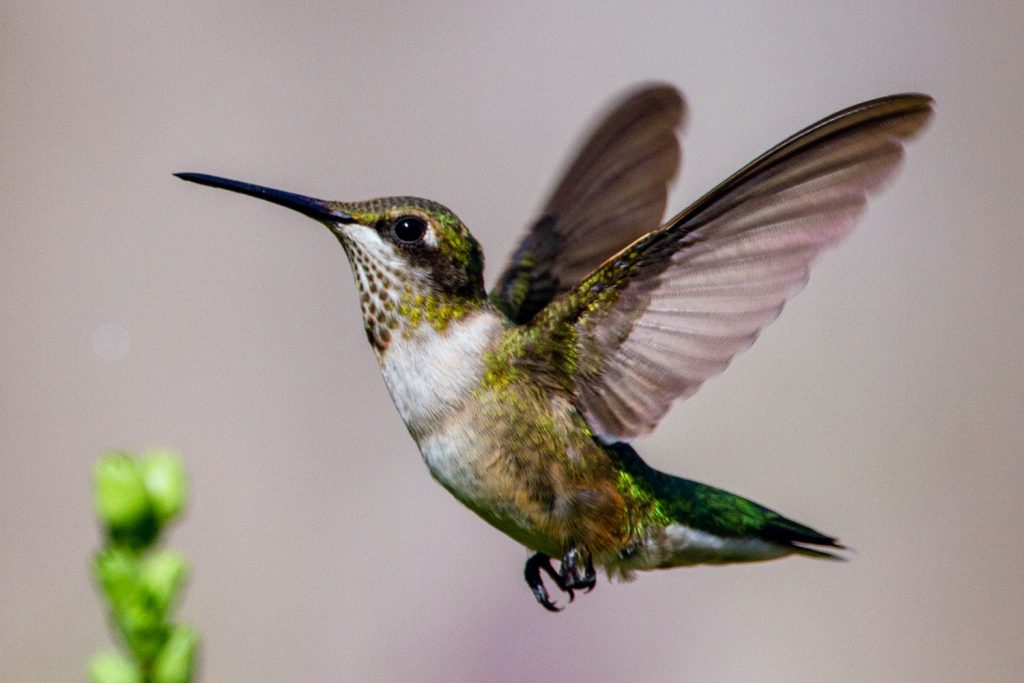
How can you prevent hummingbirds from chasing each other?
Hummingbirds are notoriously confrontational. Because it comes naturally to them, there isn’t much you can do to stop them. Of course, the good news is, your neighborhood hummingbirds probably won’t kill each other, even if they become aggressive. But all that fighting can waste their hard-earned calories. If they expend all their energy chasing each other around, they may not have enough to migrate or raise their young. To help your hummingbird friends make the most of the nectar they consume, here are a few tricks that will prevent them from fighting.
Space hummingbird feeders far enough apart
You can prevent your backyard hummingbirds from chasing each other by placing their feeders far apart. If your hummingbirds have a healthy space cushion when they eat, they won’t feel like they have to be on the defensive all the time.
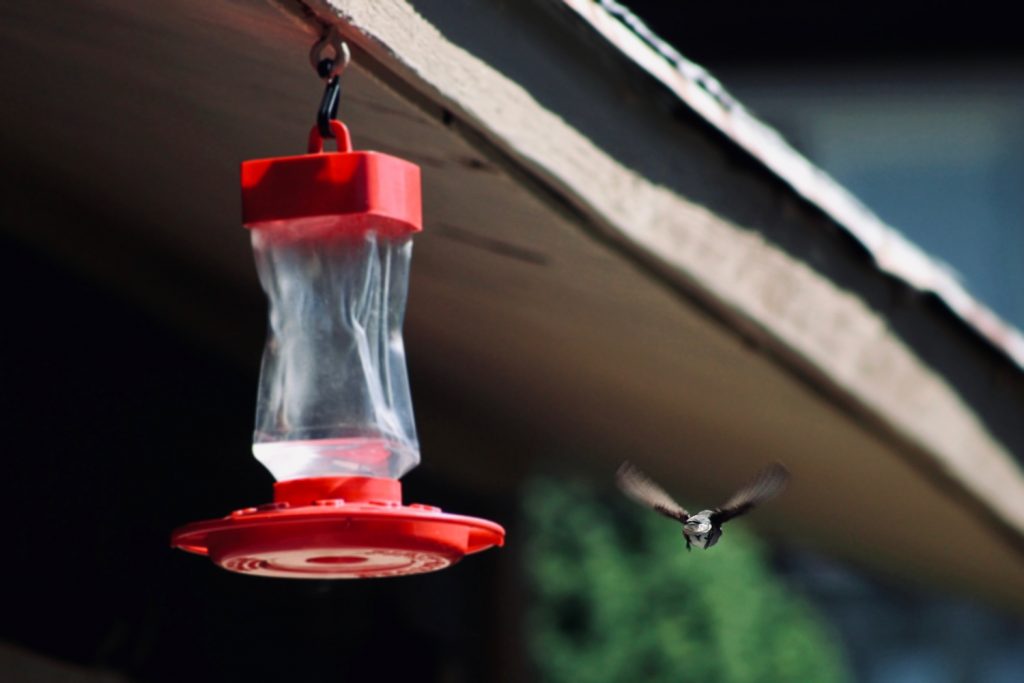
Install several feeders
Installing just one feeder can ramp up the competition in the local hummingbird community. Instead, hang two or three feeders in different locations around your yard to give your winged visitors plenty of opportunities to feed.
While it’s important to ensure your local hummingbirds have enough nectar to enjoy, it’s equally important that you avoid installing too many feeders. Four or more hummingbird feeders may attract too many hummingbirds. This encourages aggressive and territorial behaviors in male hummingbirds, which can discourage female hummingbirds from visiting your backyard.
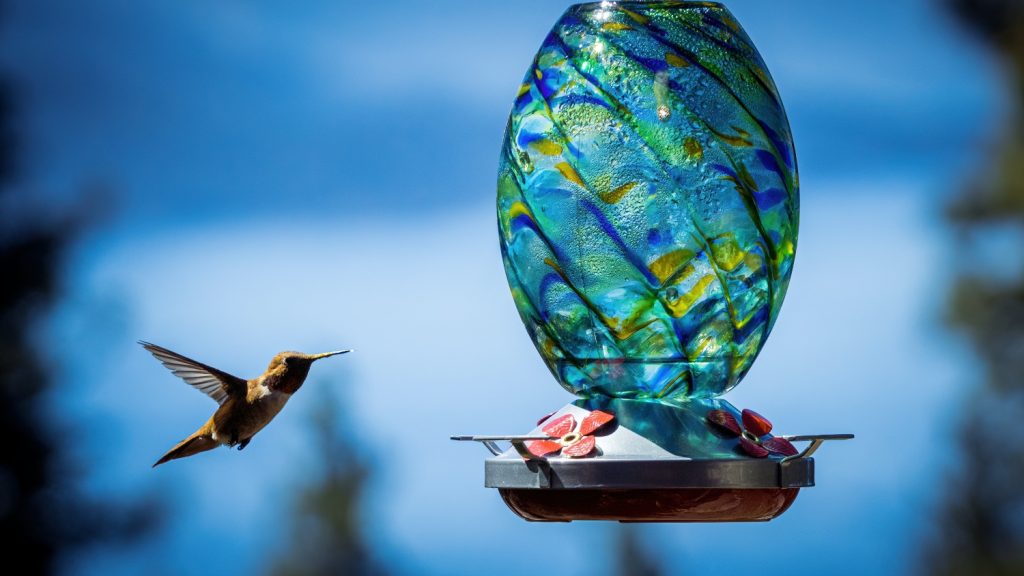
Install single port feeders
Sometimes, the more resources a male hummingbird has available, the more he feels like he has to protect them. By limiting the resources, the hummingbird begins to see it as fair game and is less likely to become overly protective of it.
Hanging single-port feeders allows hummingbirds to view the feeder as they might a single flower. They drink their fill, then move on to another food source. This allows multiple hummingbirds to feed and prevents all the fighting.
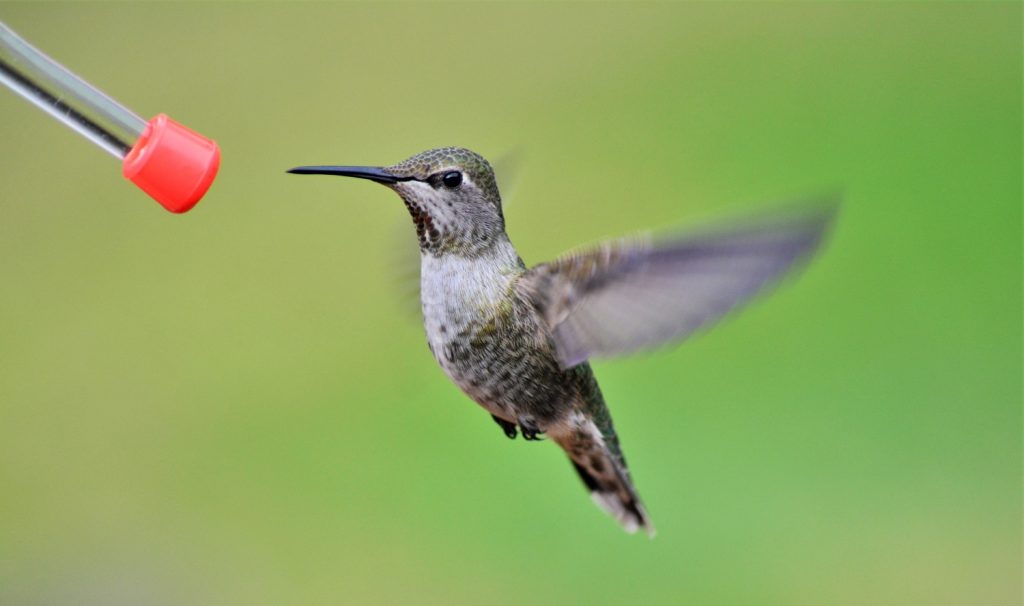
Avoid feeders with perches
Dominant hummingbirds may become territorial over their preferred perch on a feeder. To prevent one or two hummingbirds from dominating a single feeder, choose hummingbird feeders that don’t have perches. This helps level the playing field so dominant hummingbirds can’t hoard all of the nectar for themselves.
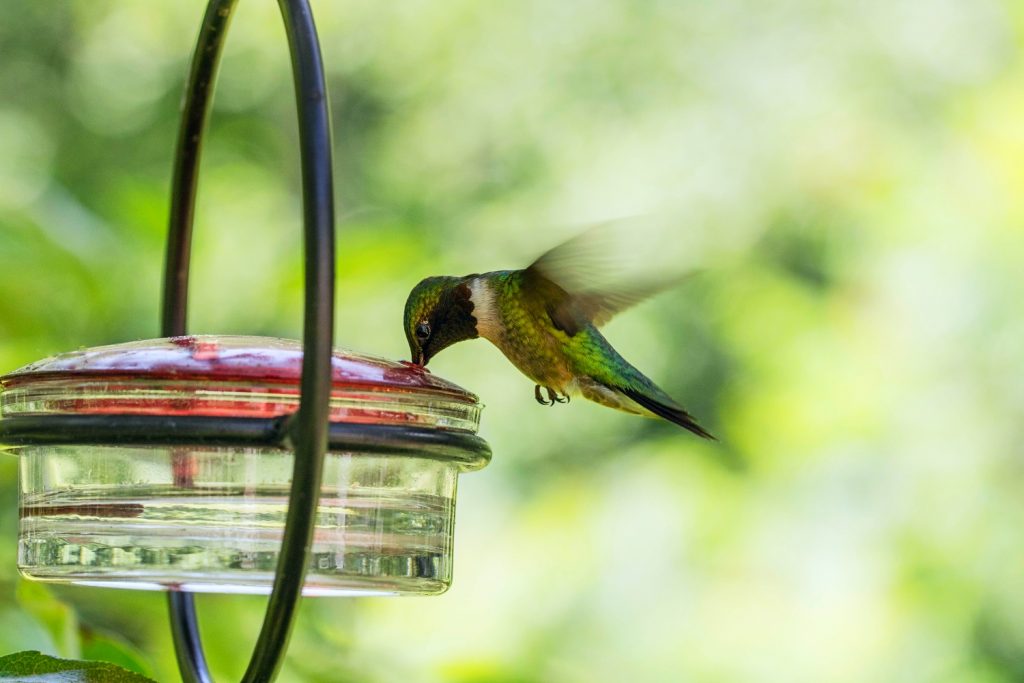
Plant hummingbird-approved flowers nearby
Homemade nectar is a valuable resource for migrating hummingbirds. But they still enjoy visiting their favorite flowers. Add hummingbird-approved blooms like lantana, wisteria, and lavender to encourage hummingbirds to visit different parts of your backyard. This will also encourage the hummingbird’s scavenging instinct so they enjoy other foods, including bugs like aphids and flies. These valuable sources of protein help round out the hummingbird’s otherwise sugar-rich diet.
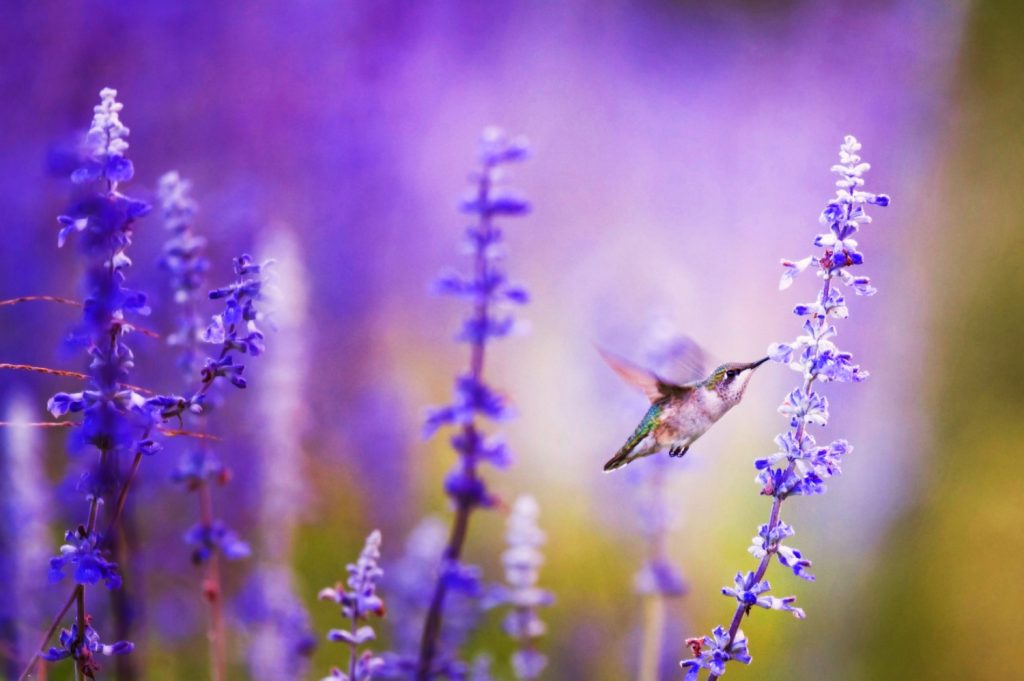
Offer a variety of hummingbird favorite foods
Your local hummingbirds won’t hesitate to take a sip of your homemade nectar. But they actually enjoy a variety of sweet treats. Set out a slice of watermelon or a few orange pieces for your hummingbirds to snack on. You can also fill a small plant saucer with grape jelly for them. Hummingbirds love fruit jellies. Just make sure to choose seedless varieties that are made with sugar, not artificial sweeteners.
How else can you support your local hummingbird population?
Giving your hummingbirds a variety of foods will make them feel at home in your backyard, but there are a few other things you can do to support your local hummingbird community. Start by checking the trees and shrubs near your feeder for nests made by other birds. Hummingbirds are less likely to visit your yard if they think songbirds have already set up shop there. Removing their nests early will make your hummingbirds feel safe, increasing the chances that they’ll nest in your garden.
Prioritizing native pollinator plants over hybrid ornamentals is also a good idea. Pretty as they are, hybrid plants don’t produce much pollen or nectar. Native species are a much more abundant, and much more nutritious source of food. Check out this website to determine which flowering plants are native to your growing region. Your local hummingbirds will thank you!
Hummingbirds chase each other for a variety of reasons. But with a little careful planning, you can curb these aggressive tendencies and help your hummingbirds feel at ease in your garden.
